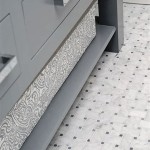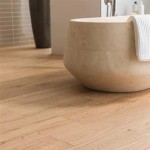How to Install Vinyl Flooring Over Ceramic Tiles: A Comprehensive Guide
Transforming your flooring with vinyl over ceramic tiles is a budget-friendly and DIY-friendly project. However, it requires meticulous preparation and careful execution to achieve a flawless and long-lasting finish. This guide will equip you with the essential steps, considerations, and tips to ensure a successful installation.
Materials Required:
- Vinyl flooring (planks or tiles)
- Underlayment (optional)
- Adhesive or nails
- Spacers
- Caulk
- Measuring tape and pencil
- Utility knife
- Joint roller >
Step 1: Assess the Ceramic Tile Surface
Inspect the ceramic tiles for any loose, cracked, or uneven surfaces. If necessary, repair or level the tiles to create a smooth and stable base. Ensure the tiles are clean and free of dust, debris, or grease.
Step 2: Consider Underlayment (Optional)
An underlayment can enhance the comfort, sound insulation, and moisture resistance of your vinyl flooring. It is especially beneficial if the ceramic tiles have minor imperfections or irregularities. Choose an underlayment that is compatible with both vinyl flooring and ceramic tiles.
Step 3: Determine the Laying Pattern
Decide on the desired laying pattern for your vinyl flooring. Common options include straight, staggered, or herringbone. Measure the room and calculate the number of planks or tiles needed for the desired coverage. Allow for some extra pieces in case of errors or cuts.
Step 4: Start the Installation
Apply adhesive or nail down the first row of vinyl planks or tiles, ensuring alignment and using spacers as needed. Continue laying the flooring row by row, staggering the joints and pressing firmly into place. Use a joint roller to secure the seams.
Step 5: Cut and Fit around Obstacles
As you encounter obstacles such as walls, doorways, or pipes, measure and cut the vinyl flooring to the desired shape. Use a utility knife for precise cuts. Be cautious of damaging the ceramic tiles underneath.
Step 6: Finish the Edges
Once the main area is covered, trim the excess vinyl flooring around the edges and install transition moldings to create a seamless transition to other flooring surfaces. Use caulk to seal any gaps or seams for a professional finish.
Tips for Success:
- Clean the ceramic tile surface thoroughly before installation.
- Allow the vinyl flooring to acclimate to the room temperature for 24-48 hours before laying.
- Use a sharp utility knife for precise cuts.
- Press firmly on each vinyl plank or tile to ensure a secure bond.
- Protect the newly installed flooring from heavy foot traffic or objects until the adhesive or nails have completely set.

New Vinyl Plank Flooring Over Tile Table And Hearth

New Vinyl Plank Flooring Over Tile Table And Hearth

New Vinyl Plank Flooring Over Tile Table And Hearth

Lvt Flooring Over Existing Tile The Easy Way Vinyl Floor Installation Diy

Lvt Flooring Over Existing Tile The Easy Way Vinyl Floor Installation Diy

New Vinyl Plank Flooring Over Tile Table And Hearth

How To Lay Tile Over An Existing Vinyl Floor Today S Homeowner

New Vinyl Plank Flooring Over Tile Table And Hearth

New Vinyl Plank Flooring Over Tile Table And Hearth

Can You Put Vinyl Plank Flooring Over Ceramic Tile Floors Blvd
Related Posts








